Interesting we see such a variation between the PR measurments in this thread, despite nearfield conditions. Some look excellent, some look much like a non-ideal port.
I imagine some of the difference could be placement of the PR with respect to to internal cabinet modes, as much as leak through from the active driver.
I'd love to also see distortion comparisons with a well optimised port.
I imagine some of the difference could be placement of the PR with respect to to internal cabinet modes, as much as leak through from the active driver.
I'd love to also see distortion comparisons with a well optimised port.
have a look at my latest update in the port resonance absorber and port geometry thread:I'd love to also see distortion comparisons with a well optimised port.
https://www.diyaudio.com/community/...rbers-and-port-geometries.388264/post-7771422
I am actually also still extremely interested about the leak through.I imagine some of the difference could be placement of the PR with respect to to internal cabinet modes, as much as leak through from the active driver.
I have quite literally a project laying next to me to test this nicely, but I just can't get to it.
As for internal resonances, it's the same story again as with a TL with an offset on the drivers as well as de PR.
Just have a play with Hornresp and see how this will change things quite drastically 🙂
One of the unspoken issues with PR's is the same Kms(x) that's causing trouble with woofers.
Which in this case would shift the tuning frequency, which can be very bad for PR's with a compliance that has a poor linearity.
From a system tuning point of view you also want a Vas that is as big as possible.
Unfortunately, this can create all kinds of other mechanical (practical) issues.
#hifijim thread inspired me to copypaste Erin's Klippel NFS measurements of different kind of bookshelves - nothing dramatic
Closed box
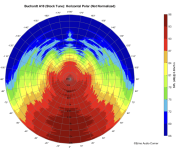
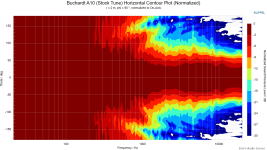
Front ports
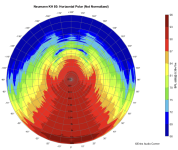
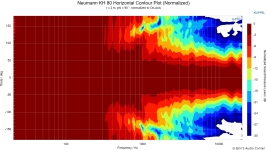
Double radiators on backside
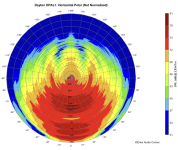 (missing)
(missing)
Closed box


Front ports


Double radiators on backside
 (missing)
(missing)